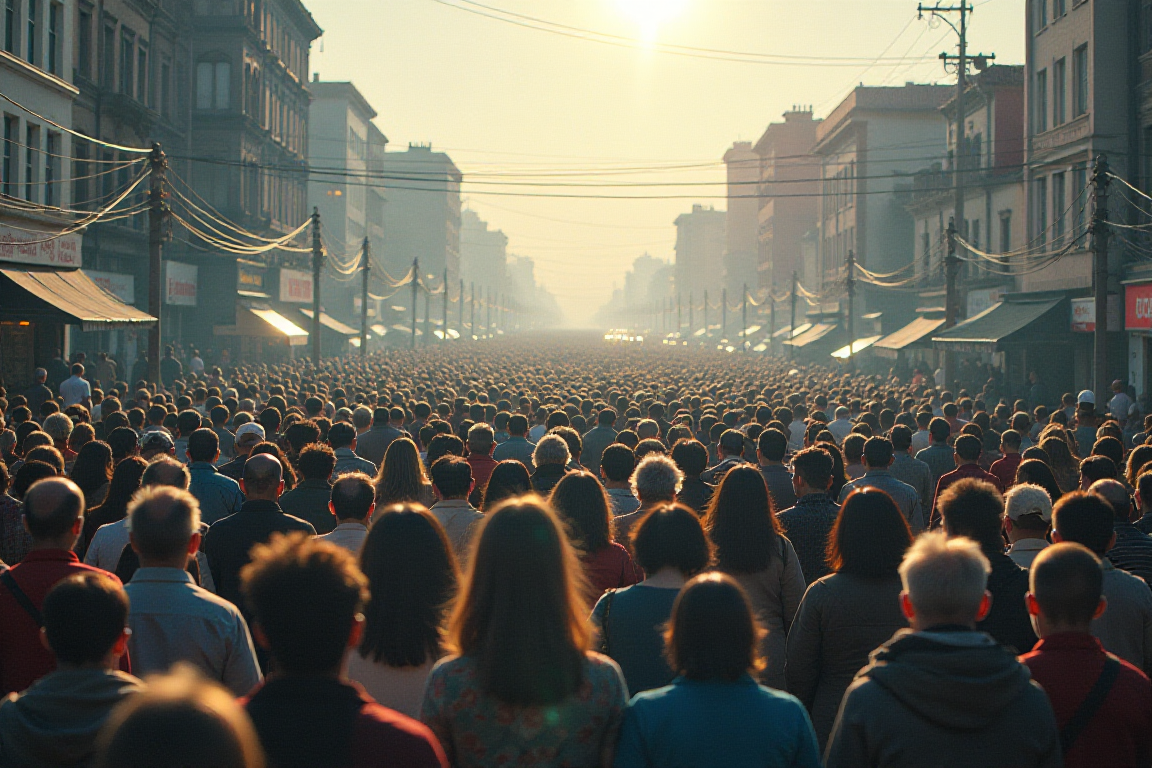For a long time, global concern focused on the threat of overpopulation, too many people straining Earth’s resources.
But lately, the conversation has taken a surprising turn.
Birth rates are falling not just in developed countries like Japan or the US, but in places once expected to fuel population booms, like India, Indonesia etc.
What was once seen as a ticking population time bomb is now being replaced by something else entirely: the fear of a world with too few people.
A world approaching peak population
In a interview to Bloomberg, Jennifer Sciubba, a political demographer who heads the Population Reference Bureau spoke, says it’s true that birth rates are falling in a lot of countries but that doesn’t mean the global population has already peaked.
In fact, the UN still expects the world to hit around 10.3 billion people by the 2080s before the numbers start to dip.
That said, signs of change are already visible. In the US, for example, 40% of counties are now seeing their populations shrink—something that used to be rare.
Sciubba points out that this shift in population forecasts is fairly new.
For years, falling fertility was mostly seen in wealthier countries. But now, it’s a global pattern.
People everywhere are rethinking what family size should look like.
Better access to contraception and the rising financial and emotional cost of raising kids have both played a big part in why fewer people are choosing to have large families.
Real world impact
Sciubba is quick to point out that population shifts aren’t a one-size-fits-all crisis they bring a tangled mix of challenges, and often in contradictory ways.
One of the biggest issues is aging. In many countries, especially those with “pay-as-you-go” pension systems, fewer workers are being asked to support a growing number of retirees.
That’s putting serious pressure on welfare structures that weren’t designed for such lopsided demographics.
At the same time, governments are being pulled in multiple directions. Some are scrambling to solve housing shortages now, only to worry about empty schools and excess infrastructure down the road.
These shifts force a rethink of everything from where to build homes to how to invest in education and long-term care.
Having previously advised the US Department of Defense on demographic issues, Sciubba also sees the political ripple effects.
Countries with very young populations can be more prone to unrest and instability, while aging nations are being pushed to find new ways to grow their economies and keep society connected as traditional family and work structures evolve.
Beyond headcounts
Still, Sciubba says throwing money at the problem rarely works.
Countries like South Korea have offered all kinds of perks, cash bonuses, subsidized childcare, even housing support but none of it has moved the needle much.
The country still has the world’s lowest birth rate. Immigration is often pitched as a solution, but that’s not so simple either. It can help, sure, but it’s not a magic fix.
Political pushback, cultural tensions, and concerns about jobs or identity often make it tough to scale.
We need to rethink what we’re aiming for in the first place.
That means building systems that actually support people: affordable childcare, solid healthcare, help for older adults.
It also means making it easier for people to work longer if they want to without forcing everyone to work into their 70s just to keep pensions afloat.
And maybe most importantly, Sciubba says, we’ve got to stop seeing population growth as the only measure of success.
A smaller, healthier, more resilient society might serve people better than one that’s just trying to get bigger.
The post The new global demographic challenge: not too many, but too few appeared first on Invezz

